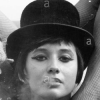this is what I have so far please help
#include <GL/glut.h>
#include<math.h>
GLsizei MOUSEx=0, MOUSEy=0;
GLfloat SIDE=50;
GLfloat translatex=0, translatey, rotatedegree;
GLfloat translatea, translateb;
void drawSquare()
{
glColor3f( 0, 0, 1 );
glBegin(GL_POLYGON);
glVertex3f(MOUSEx, MOUSEy,0);
glVertex3f(MOUSEx+SIDE, MOUSEy,0);
glVertex3f(MOUSEx+SIDE, MOUSEy+SIDE,0);
glVertex3f(MOUSEx, MOUSEy+SIDE,0);
glEnd();
glFlush();
}
void Torus2D( float inner, float outer, unsigned int pts )
{
glBegin( GL_QUAD_STRIP );
for( unsigned int i = 0; i <= pts; ++i )
{
float angle = ( i / (float)pts ) * 3.14159 * 2.0f;
glVertex2f( inner * cos( angle ), inner * sin( angle ) );
glVertex2f( outer * cos( angle ), outer * sin( angle ) );
}
glEnd();
}
void display(void)
{
glClearColor (0.0,0.0,0.0,1.0);
glClear(GL_COLOR_BUFFER_BIT | GL_DEPTH_BUFFER_BIT);
glLoadIdentity();
glColor3f( 3, 0, 0 );
//glTranslatef(50,400,0);
glTranslatef(translatex+200,translatey+400,0);
glRotatef(rotatedegree-66, 0, 0, 1);
Torus2D( 0, 30, 8 );
glLoadIdentity();
glTranslatef(translatea,translateb,0);
drawSquare();
glFlush();
}
void reshape(int w, int h)
{
glViewport(0,0,(GLsizei)w,(GLsizei)h);
glMatrixMode(GL_PROJECTION);
glLoadIdentity();
//gluPerspective (60, (GLfloat)w / (GLfloat)h, 1.0, 100.0);
glOrtho(0.0,1368,768,0,-1.0,1.0);
glMatrixMode(GL_MODELVIEW);
glLoadIdentity();
}
void spindisplay(void)
{
glutPostRedisplay();
}
void setX(int x)
{
MOUSEx=x;
}
void setY(int y)
{
MOUSEy=y;
}
void mouse(int btn, int state, int x, int y)
{
if(btn==GLUT_LEFT_BUTTON && state==GLUT_DOWN)
{
setX(x);
setY(y);
//drawSquare(MOUSEx,HEIGHT-MOUSEy);
glutPostRedisplay();
}
if(btn==GLUT_RIGHT_BUTTON && state==GLUT_DOWN)
{
exit(1); // To Exit the Program
}
}
void timer(int ignored) {
translatex+=1.08;
int x, y;
if(translatex < MOUSEx && translatex > MOUSEx-265)
{
translatey += -1.08;
}
if(translatex > MOUSEx || translatex < MOUSEx-265)
{
translatey += 1.08;
}
glutPostRedisplay();
glutTimerFunc(30,timer,0);
}
int main(int argc, char **argv)
{ glutInit(&argc,argv);
glutInitDisplayMode(GLUT_SINGLE|GLUT_RGB);
glutInitWindowSize(1366,768);
glutInitWindowPosition(0,0);
glutCreateWindow("Moving squares");
glutDisplayFunc(display);
glutReshapeFunc(reshape);
glutMouseFunc(mouse);
glutIdleFunc(spindisplay);
glEnable(GL_DEPTH_TEST);
glutTimerFunc (40, timer,0);
glutMainLoop();
}






